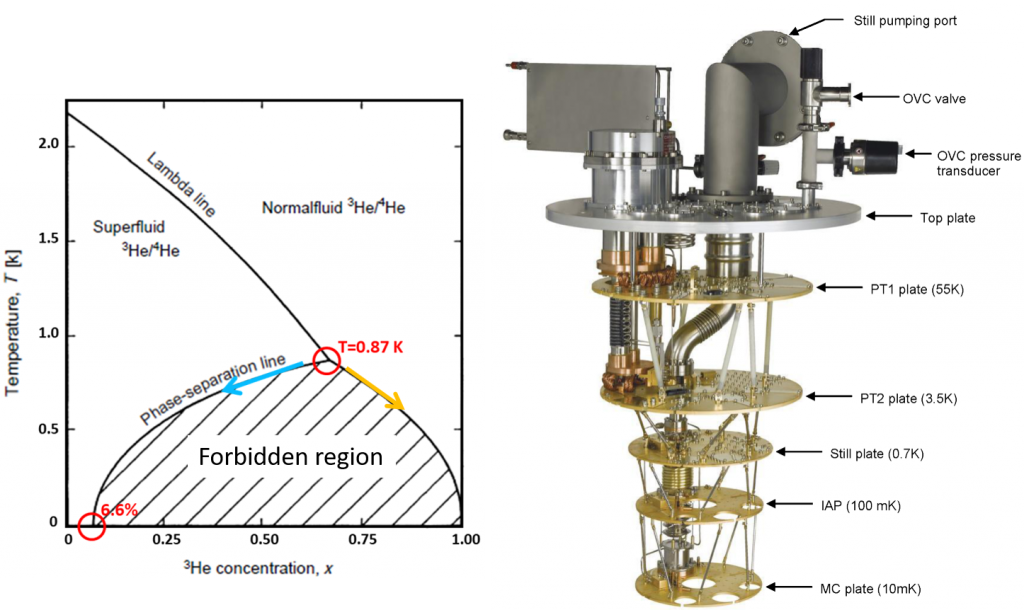In dealing with superconducting hybrid systems, an experimental apparatus able to reach cryogenic temperatures is mandatory. In fact, not only the critical temperature of the superconductors has to be reach, but also we need to move towards temperature ranges where the thermal coupling among electrons, phonons and photons thermal components are more suitable for our goals. Usually this means we need to use a cryostat whose temperature can be set from tens of mK to some K.
Cryostat we use are dillution refrigerator with a 3He-4He mixture.
A 3He-4He dillution refrigerator takes advantage from the unique features of the 3He-4He mixture. In fact, for temperature lower than 870 mK, two thermodynamical phases coesist in the mixture, which differ for the 3He concentration: as the temperature gets lower, the concentrate phase becomes more and more rich of 3He whereas the diluite phase becomes poorer of it since it reaches the limited 6.6% concentration [1]. By pumping on the mixture, a transfer of 3He from a phase to the other achieves an endothermic cycle which cools down the temperature.
In our measurements we use a cryostat by Leiden Cryogenics and by Oxford instruments, where the 3He- 4He dillution machanism is the last step of the cooling down process and where a base temperature of 10 mK can be reached.

3He-4He dilution cryostat Triton 200, by Oxford Instruments. The cryostat is made by a series of nested metallic shells. Each plate showed in the picture represents a stage in the cooling down process, the coolest plate is the innest one. which connected by pipes and probes Adapted from [2].
[1] Frank Pobell. Matter and Methods at Low Temperatures, Springer.
[2] Triton 200 product guide, Oxford Instruments, 2012.